How to Set Up a Wireless Network (WiFi) Connection
Router settings

Buy a wireless router. There are many factors that determine which router is best for you. These include distance, interference, transmission rate, and security.
One of the most important factors to consider when buying a router is the distance between it and your wirelessly connected devices. Usually, the more expensive the router, the more antennas the router has and, therefore, provides a more stable connection over longer distances.
Another consideration is signal noise. If you have many devices that operate in the 2.4 GHz frequency band, such as microwave ovens and cordless phones, they can interfere with the Wi-Fi signal. Newer routers can operate in the 5 GHz range. This is the less commonly used range and therefore less interference. Its downside is that 5 GHz signals don't travel as far as 2.4 GHz.
Transfer speed is also a feature to consider. Newer routers are claimed to be able to transfer data at up to 450 Mbps. While it can be useful for transferring data between two computers on the same network, this will not increase your overall internet speed as this is set by your network service provider. There are three main speed options for routers, namely: 802.11g (54 Mbps) 802.11n (300 Mbps), and 802.11ac (450 Mbps). In it, note that unless placed in an empty and free of interference room, achieving these speeds is nearly impossible in any environment.
Finally, make sure it's a router with the most modern form of wireless security – WPA2. It's pretty much the standard for every new router. Even so, if you're planning to buy a used, used router, this is still a factor for you to consider. Older encryption algorithms are not as secure and WEP keys can be cracked in minutes.

Connect the router to the modem (modem). Once you have purchased the router, you need to connect it to the modem. On the router, the WAN/WLAN/Internet port is located on the back panel. Use a standard Ethernet cable to connect this port to the modem.
Make sure you have the router plugged in and turned on.
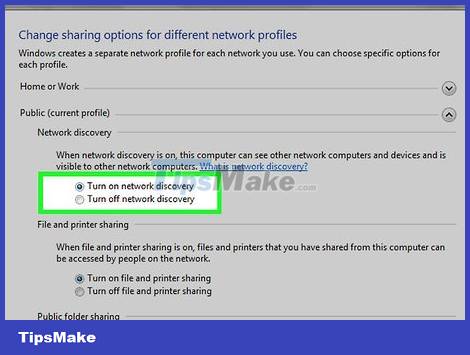
Connect the computer via an Ethernet cable. This step is not always necessary, but can be very useful if you want to set up your wireless router before connecting any wireless devices to it. Connecting your computer via a physical cable will allow you to tweak your wireless settings without losing connection to the router.
To get the most out of your router setup, keep it next to your computer while you make adjustments. Once configured, you can move the router to its intended location.
Router Configuration
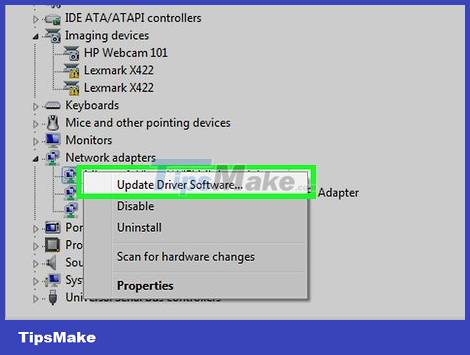
Install the router's bundled software. Not all routers come with installation software. But if it does, install it on a computer connected to the router via an Ethernet cable. Using the included software makes setting up the router a lot more convenient than having to go through the configuration menu.
Use the software to name your wireless network and select the type of security you want to use. Choose WPA2 for the most secure network. Next, choose a password and continue.
Most router software automatically detects your internet settings. That's the information your router needs to interpret your internet connection and deliver it to all of your wirelessly connected devices.
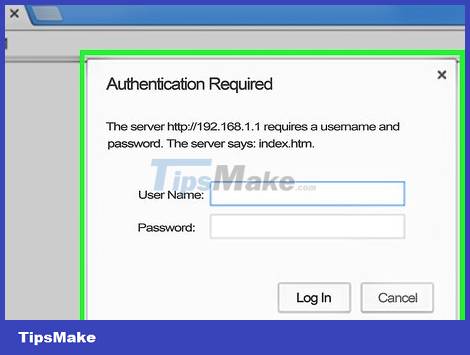
Open the router configuration page. If your router does not come with any installation software, you will have to connect to the router's configuration page through a web browser. Open the browser you want to use and enter the web address for the router. That's usually 192.168.1.1 or 192.168.0.1. Refer to the user manual that came with the device for the correct address.
You will be asked to provide a username and password to continue accessing the router's configuration page. They are also provided in the user manual that came with your router. The default username is usually: admin and the default password is usually: password or admin. You can find login information specific to your router family at PortFoward.com.
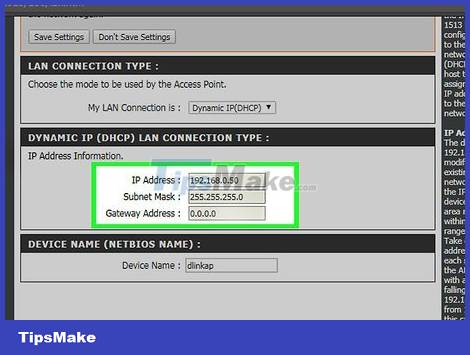
Enter your internet connection information. These include IP addresses and DNS information from your internet service provider. Most routers fill in this information themselves. If they are not automatically filled in, contact your internet service provider to get your input.

Set wireless settings. Most routers have a Wireless Setup section located at the top of the router's menu. From this section, you can turn the wireless signal on or off, rename the network, and set encryption.
To name the network, select the SSID field. This is the name that will be displayed on all devices that detect your network. If you live in a high-traffic area, don't include any identifiable information in the SSID because anyone using a wireless device will see it.
Make sure you've set encryption to the latest version that your router allows. In most cases that will be WPA2. WPA2 works with only one password. You can enter anything you want. Highly secure passwords are made up of upper and lower case letters, numbers, and symbols.
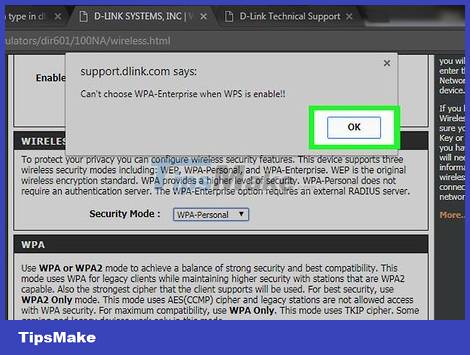
Apply your settings. When you're done adjusting the settings, don't forget to click the Apply or Save Changes button in the router's configuration page. It will take a while for the router to process, and your new settings will take effect.
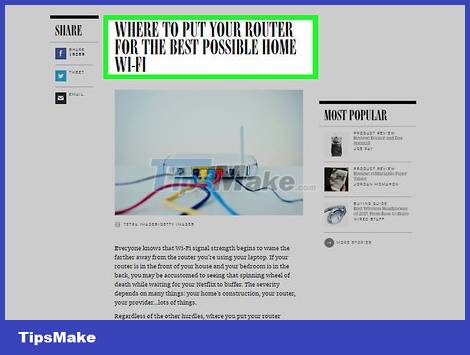
Choose where to place the router. To get the best signal possible, try to place the router in a central location. Remember that any obstruction, such as a wall or door, will degrade the signal. If your home has multiple floors, you should consider using multiple routers to ensure the coverage you want.
Don't forget that the router must be physically connected to the modem. This may limit your choice of router placement.
Connect to the router
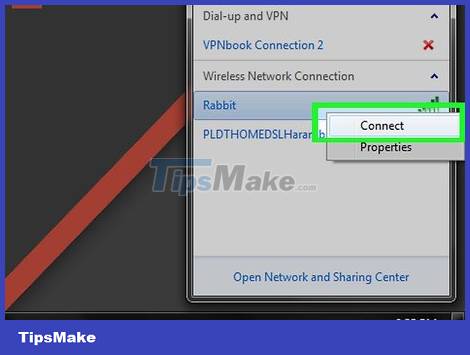
Connect the device to the network. Once the router has transmitted a wireless signal, you can test the connection by using a Wi-Fi device, such as another computer, smartphone, tablet, etc. to scan the network. wire.
Scan for new networks. On Windows, click the network icon in the System Tray located in the lower-right corner of the screen. Select Connect to a Network and find your SSID. On a Mac, click the AirPort icon that looks like three curves in the menu bar. Select your SSID from the list of available networks.
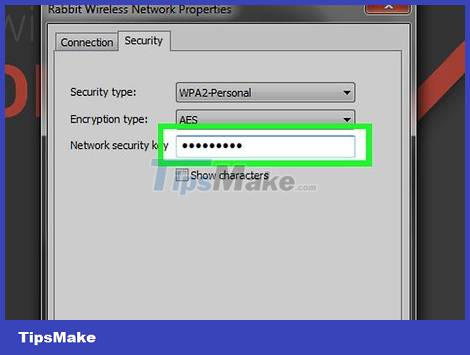
Enter password. If WPA2 encryption is enabled, you'll have to enter a password to access the network. If you use a personal computer, you can turn off the character hiding feature on some systems to make it easier to see the password entered.
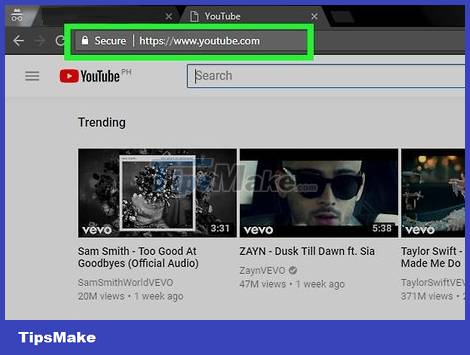
Check your connection. Once on the network, wait a while for an IP address to be assigned. Open your browser and try to visit a website you wouldn't normally visit (to make sure the website isn't loading from memory).
You should read it
- How to turn on / off automatically wireless network connection in Windows 10
- Set up Ad Hoc wireless network to play WiFi without software from your laptop
- Upgrade wireless network system
- The way that 5G will change Internet connection in your home
- Several ways to improve Wi-Fi connection
- How strong is the wireless signal in your Wi-Fi network?
- How to Set Up a Wireless Connection to a Printer
- Turn Windows 8 laptop into Wifi hotspot
May be interested
- Wireless network knowledge test
 this term test is knowledge of wireless network. these are just the most basic knowledge you must know when researching wireless networks
this term test is knowledge of wireless network. these are just the most basic knowledge you must know when researching wireless networks - How to set up preferred WiFi connection mode on Mac
 on macs, it automatically connects to healthy wifi networks in the list of wifi devices captured. thus, we will not worry about the flickering network, the weak network will use stable connections.
on macs, it automatically connects to healthy wifi networks in the list of wifi devices captured. thus, we will not worry about the flickering network, the weak network will use stable connections. - Instructions for use and security of Wifi network
 wireless networks are one of the great inventions of the 21st century. instead of using cables to connect computers and devices together, you can now use radio waves to connect. this technology has been widely known as 'wifi'. once set up correctly, wifi will not encounter any problems.
wireless networks are one of the great inventions of the 21st century. instead of using cables to connect computers and devices together, you can now use radio waves to connect. this technology has been widely known as 'wifi'. once set up correctly, wifi will not encounter any problems. - The simplest way to connect wifi to a desktop computer!
 wireless trends are growing strongly in the technology community. minimizing wireless devices brings more neatness. with pcs, you can completely use wifi like a laptop instead of using lan network as before. so how to connect wifi for desktop computers?
wireless trends are growing strongly in the technology community. minimizing wireless devices brings more neatness. with pcs, you can completely use wifi like a laptop instead of using lan network as before. so how to connect wifi for desktop computers? - How to secure WiFi network, increase security for WiFi
 to secure wifi there is no perfect method, you need to use a combination of tricks and tools to ensure the wifi network is safe. here are ways to secure wifi that you can refer to.
to secure wifi there is no perfect method, you need to use a combination of tricks and tools to ensure the wifi network is safe. here are ways to secure wifi that you can refer to. - How to speed up Wifi network, increase WiFi signal
 how to speed up wifi network, increase wifi signal to the highest level will help stabilize wifi network, better capture wifi for devices connected to wifi network. invite you to consult!
how to speed up wifi network, increase wifi signal to the highest level will help stabilize wifi network, better capture wifi for devices connected to wifi network. invite you to consult! - Some ways to improve Wi-Fi connection and speed up WiFi
 wi-fi wireless network is one of the biggest benefits of using laptops instead of bulky desktop computers.
wi-fi wireless network is one of the biggest benefits of using laptops instead of bulky desktop computers. - Protect WiFi network before hackers
 unsecured wifi wireless internet access networks can be easily hacked, so securing your wifi network is a must to avoid unnecessary curiosity. very easy to set up a secure wifi network.
unsecured wifi wireless internet access networks can be easily hacked, so securing your wifi network is a must to avoid unnecessary curiosity. very easy to set up a secure wifi network. - Top 10 best Wi-Fi USB 2018
 good internet connection is an essential part of keeping in touch with the world. if your computer doesn't have a built-in wi-fi connection, there are plenty of usb wi-fi on the market to give you the choice of serving many purposes such as watching netflix, browsing the web or playing games.
good internet connection is an essential part of keeping in touch with the world. if your computer doesn't have a built-in wi-fi connection, there are plenty of usb wi-fi on the market to give you the choice of serving many purposes such as watching netflix, browsing the web or playing games. - How to share Internet Ethernet connection for mobile devices
 after all, the wired ethernet network is still more popular, and you can convert that wired ethernet connection to a wi-fi connection that all your mobile devices, from smartphones, phones. photos, laptops, until game consoles ... can be used.
after all, the wired ethernet network is still more popular, and you can convert that wired ethernet connection to a wi-fi connection that all your mobile devices, from smartphones, phones. photos, laptops, until game consoles ... can be used.










 Fix Wi-Fi No Internet Access error
Fix Wi-Fi No Internet Access error How to view the currently connected Wi-Fi password on Windows 11
How to view the currently connected Wi-Fi password on Windows 11 How to connect WiFi for Windows laptops and fix WiFi errors on Windows laptops
How to connect WiFi for Windows laptops and fix WiFi errors on Windows laptops Steps to block Windows 10 from automatically connecting to Wifi
Steps to block Windows 10 from automatically connecting to Wifi Errors related to Wi-Fi on iPhone and how to effectively handle them
Errors related to Wi-Fi on iPhone and how to effectively handle them How to fix Laptop automatically disconnecting Wi-Fi?
How to fix Laptop automatically disconnecting Wi-Fi?